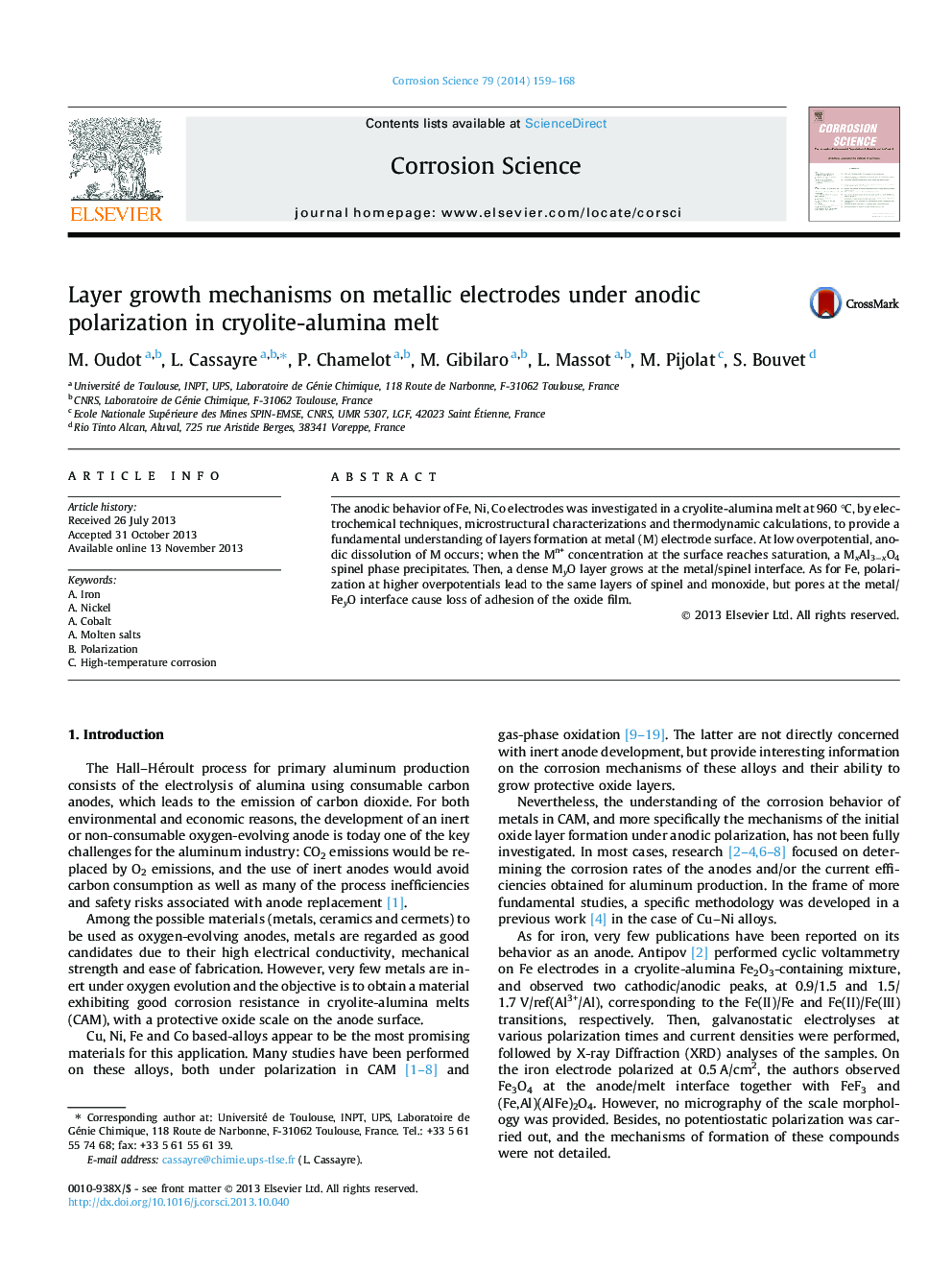| Article ID | Journal | Published Year | Pages | File Type |
|---|---|---|---|---|
| 1468999 | Corrosion Science | 2014 | 10 Pages |
•Oxidation mechanisms of Fe, Ni and Co were studied at low potential in cryolite alumina melt.•At low overpotential, anodic dissolution of metal M occurs.•At the metal surface, Mn+ react with Al3+ and O2− to form an Al-containing spinel.•A minimal current density is required to precipitate the spinel phase.•With further polarization, a monoxide layer grows at the metal/spinel interface.
The anodic behavior of Fe, Ni, Co electrodes was investigated in a cryolite-alumina melt at 960 °C, by electrochemical techniques, microstructural characterizations and thermodynamic calculations, to provide a fundamental understanding of layers formation at metal (M) electrode surface. At low overpotential, anodic dissolution of M occurs; when the Mn+ concentration at the surface reaches saturation, a MxAl3−xO4 spinel phase precipitates. Then, a dense MyO layer grows at the metal/spinel interface. As for Fe, polarization at higher overpotentials lead to the same layers of spinel and monoxide, but pores at the metal/FeyO interface cause loss of adhesion of the oxide film.
